 Facebook
Facebook
 X
X
 Instagram
Instagram
 TikTok
TikTok
 Youtube
Youtube
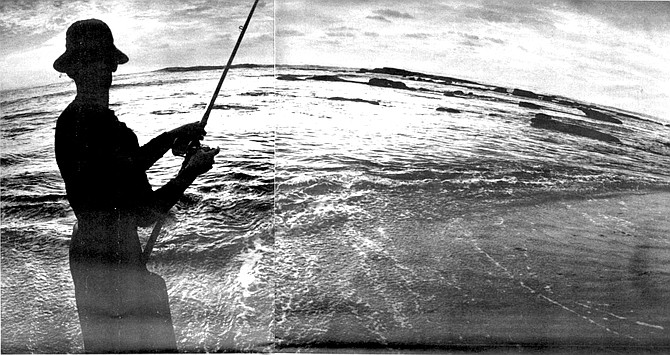
In spring in the surf, you are thinking of halibut. Everybody loves halibut. Fished for from shore, halibut offer all that is sporting in angling: a certain elusiveness, the confident strike, the spirited fight of the aggressive predator, and power and wave sense that make every landing a delicate operation. And it is arguable that there is no finer dining than fresh halibut, the big filets marinated an hour or two, then grilled lightly.
By Scott Sadil, Dec. 5, 1985 | Read full article
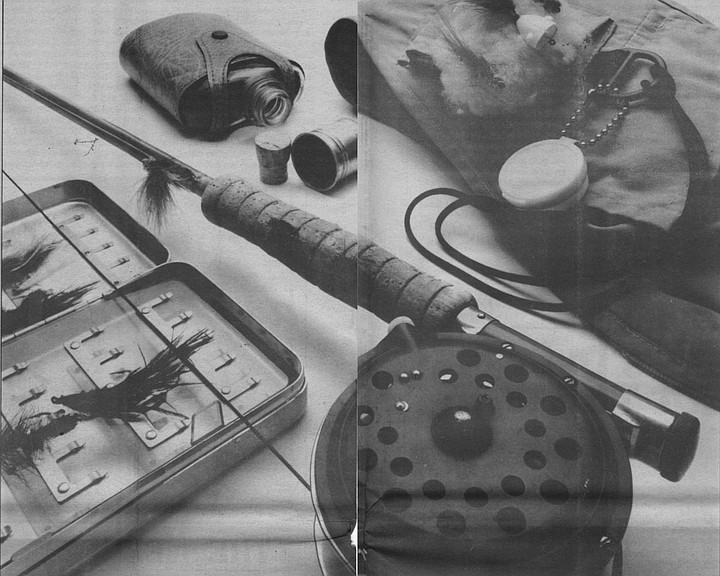
With the one bass under my belt, and others that day that followed, I set myself to a new problem: bringing a bass home alive. In the back yard of my home there’s a pond, cement lined, which harbors a fascinating cross section of freshwater life. Some years my buddy brings tadpoles he collects from a vernal pool near his work place, and we toss them in with the mosquito fish, aquatic snails, and whatnot.
By Scott Sadil, May 9, 1985 | Read full article

I hunt quail from my pickup truck, on foot in public nature reserves, at the edge of housing tracts and sordid building developments. Sometimes I first see them scurrying through the brush or perched atop a yucca or fence post. Sometimes I hear them, that comical call of “Chi-ca-go, Chi-ca-go,” or “Where are you? Where are you?” I hunt quail, coming as close to them as I can to indulge myself in their elaborate beauty.
By Scott Sadil, July 24, 1986 | Read full article
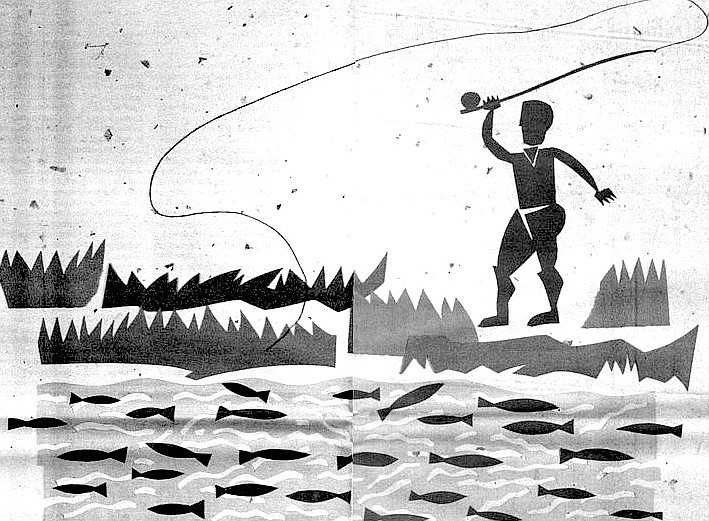
Three men carried trout fingerlings from the Río San Ramón to the backcountry wilds of the Sierra San Pedro Mártir. The trout were transported by muleback in five-gallon milk cans, the men stopping every thirty minutes, day and night, to pump air into the cans. By the end of the journey, trout had been placed in the upper reaches of the Río San Ramón as well as the headwaters of three other streams.
By Scott Sadil, Feb. 26, 1987 | Read full article
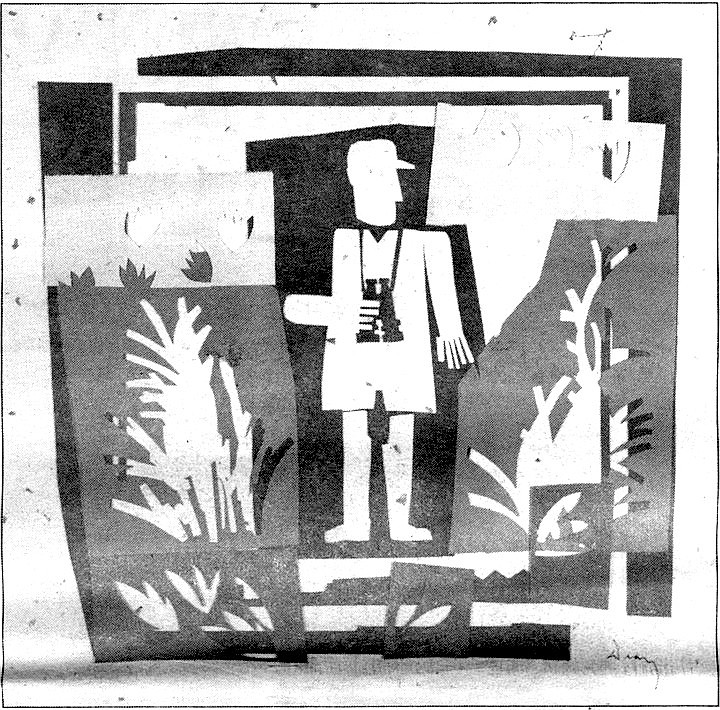
In a wounded rampage, the buck came flying out of the brush at full-tilt, headed for my midsection. Horror beset me in the instant that I envisioned his antlers tearing into my flesh. I couldn’t move; there was no time. Then, still at headlong speed, he veered at an absolute ninety-degree turn within the three feet of space the creek bed allowed. His antlers were inches from my torso. I squeezed off a round from the hip.
By Adam Kurzejeski, Feb. 26, 1987 | Read full article
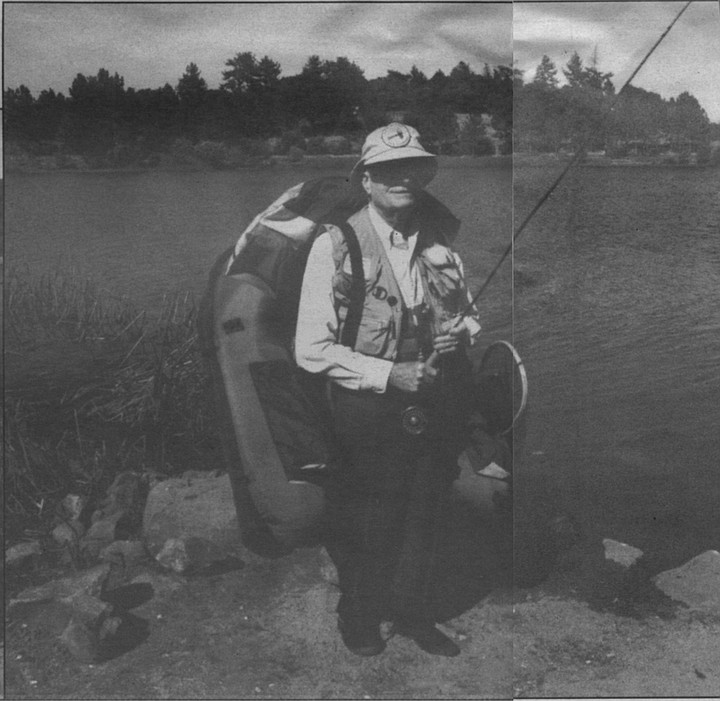
The casters trade rods back and forth. Watching them, I can feel more sympathy for the obsession with equipment. I’m obsessed too; it’s impossible to be a serious fly fisherman and not be. A spinning rod is just a rod. Given enough weight and a functional reel, most anyone will chunk a lure into the next county. A bad fly rod, like several I see being tentatively caressed by the students, can make casting nearly impossible.
By Jud Weaver, Aug. 12, 1993 | Read full article

As the sun drops behind the mountains in the west, we walk back to camp, gathering kindling as we go. In camp, we light a fire over which we cook our dinner. As it gets dark, the wind comes up to gusts that Allan estimates at 50 miles per hour. My tent is blowing everywhere. I weight it down with a couple of two-and-a-half-gallon water containers, my two ice chests, a car jack, an ax, and all my clothes and bedding. Still, it inches its way down the dike.
By Ernie Grimm, Nov. 26, 1998 | Read full article

“I’m not a big fish eater, and there have been reports of toxicity that builds up in the tissue of bay fish over years and years. Sand bass I wouldn’t have a problem with, the white sea bass I wouldn’t have a problem with, the halibut I wouldn’t have a problem with. All of those fish go offshore some of the time. The only ones I would have a problem with are the ones that live here year-round, day in and day out, which are the spotted bay bass.”
By Ernie Grimm, Jan. 21, 1999 | Read full article
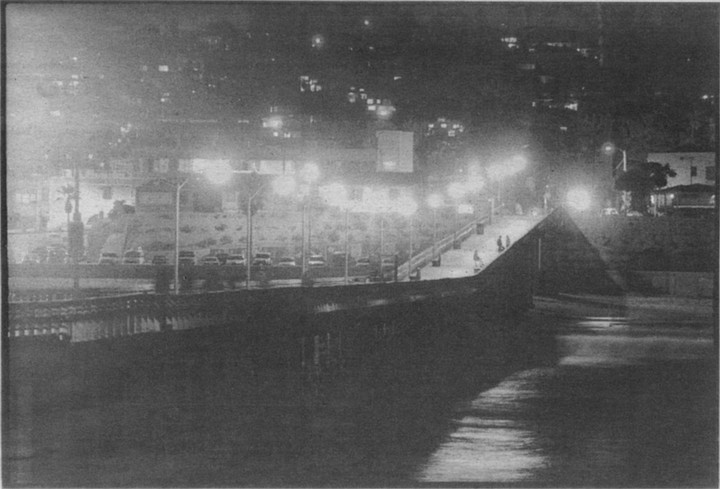
“We drive around to the different piers, and we’ve been coming here, off and on, since July. We’ve been here for about a week now.” “I’ve been out here on the pier for two straight days,” adds Calvin. “I’ve got my sleeping bag out here, and I sleep on the bench. The farthest from this spot I’ve been is to the cafe there, because Candy brought me some coffee this morning, but she forgot the cream and sugar.”
By Ernie Grimm, Jan. 28, 1999 | Read full article

At 6:45, doves are flying along with sparrows and blackbirds — “tweeties,” as the hunters call them. Looking into the rising sun, it’s hard to identify them as doves or tweeties. One hunter along the road mistakenly fires at a group of blackbirds, earning him a “That’s not a dove, damn it!” reprimand from someone along the firing line. Nesby tries his second and third shots of the day, both fairly long range, missing both.
By Ernie Grimm, Dec. 2, 1999 | Read full article


In spring in the surf, you are thinking of halibut. Everybody loves halibut. Fished for from shore, halibut offer all that is sporting in angling: a certain elusiveness, the confident strike, the spirited fight of the aggressive predator, and power and wave sense that make every landing a delicate operation. And it is arguable that there is no finer dining than fresh halibut, the big filets marinated an hour or two, then grilled lightly.
By Scott Sadil, Dec. 5, 1985 | Read full article

With the one bass under my belt, and others that day that followed, I set myself to a new problem: bringing a bass home alive. In the back yard of my home there’s a pond, cement lined, which harbors a fascinating cross section of freshwater life. Some years my buddy brings tadpoles he collects from a vernal pool near his work place, and we toss them in with the mosquito fish, aquatic snails, and whatnot.
By Scott Sadil, May 9, 1985 | Read full article

I hunt quail from my pickup truck, on foot in public nature reserves, at the edge of housing tracts and sordid building developments. Sometimes I first see them scurrying through the brush or perched atop a yucca or fence post. Sometimes I hear them, that comical call of “Chi-ca-go, Chi-ca-go,” or “Where are you? Where are you?” I hunt quail, coming as close to them as I can to indulge myself in their elaborate beauty.
By Scott Sadil, July 24, 1986 | Read full article

Three men carried trout fingerlings from the Río San Ramón to the backcountry wilds of the Sierra San Pedro Mártir. The trout were transported by muleback in five-gallon milk cans, the men stopping every thirty minutes, day and night, to pump air into the cans. By the end of the journey, trout had been placed in the upper reaches of the Río San Ramón as well as the headwaters of three other streams.
By Scott Sadil, Feb. 26, 1987 | Read full article

In a wounded rampage, the buck came flying out of the brush at full-tilt, headed for my midsection. Horror beset me in the instant that I envisioned his antlers tearing into my flesh. I couldn’t move; there was no time. Then, still at headlong speed, he veered at an absolute ninety-degree turn within the three feet of space the creek bed allowed. His antlers were inches from my torso. I squeezed off a round from the hip.
By Adam Kurzejeski, Feb. 26, 1987 | Read full article

The casters trade rods back and forth. Watching them, I can feel more sympathy for the obsession with equipment. I’m obsessed too; it’s impossible to be a serious fly fisherman and not be. A spinning rod is just a rod. Given enough weight and a functional reel, most anyone will chunk a lure into the next county. A bad fly rod, like several I see being tentatively caressed by the students, can make casting nearly impossible.
By Jud Weaver, Aug. 12, 1993 | Read full article

As the sun drops behind the mountains in the west, we walk back to camp, gathering kindling as we go. In camp, we light a fire over which we cook our dinner. As it gets dark, the wind comes up to gusts that Allan estimates at 50 miles per hour. My tent is blowing everywhere. I weight it down with a couple of two-and-a-half-gallon water containers, my two ice chests, a car jack, an ax, and all my clothes and bedding. Still, it inches its way down the dike.
By Ernie Grimm, Nov. 26, 1998 | Read full article

“I’m not a big fish eater, and there have been reports of toxicity that builds up in the tissue of bay fish over years and years. Sand bass I wouldn’t have a problem with, the white sea bass I wouldn’t have a problem with, the halibut I wouldn’t have a problem with. All of those fish go offshore some of the time. The only ones I would have a problem with are the ones that live here year-round, day in and day out, which are the spotted bay bass.”
By Ernie Grimm, Jan. 21, 1999 | Read full article

“We drive around to the different piers, and we’ve been coming here, off and on, since July. We’ve been here for about a week now.” “I’ve been out here on the pier for two straight days,” adds Calvin. “I’ve got my sleeping bag out here, and I sleep on the bench. The farthest from this spot I’ve been is to the cafe there, because Candy brought me some coffee this morning, but she forgot the cream and sugar.”
By Ernie Grimm, Jan. 28, 1999 | Read full article

At 6:45, doves are flying along with sparrows and blackbirds — “tweeties,” as the hunters call them. Looking into the rising sun, it’s hard to identify them as doves or tweeties. One hunter along the road mistakenly fires at a group of blackbirds, earning him a “That’s not a dove, damn it!” reprimand from someone along the firing line. Nesby tries his second and third shots of the day, both fairly long range, missing both.
By Ernie Grimm, Dec. 2, 1999 | Read full article
Comments